Junagadh is an historic city in Saurashtra, nestling in the foothills of Girnar, about 350 km from Ahmedabad. The city dates back to 319 BC. The Uparkot Fort stands testimony to the presence of the Mauryan dynasty and it was said to have been built by Chandragupta. Graharipu, a Chudasama king came across the fort sometime around 976 AD and since then the fort came under various dynasties. The Fort is not the only place to visit in Junagadh. There are plenty of attractions in Junagadh that will keep you busily occupied for days.
1. Mahabat Maqbara
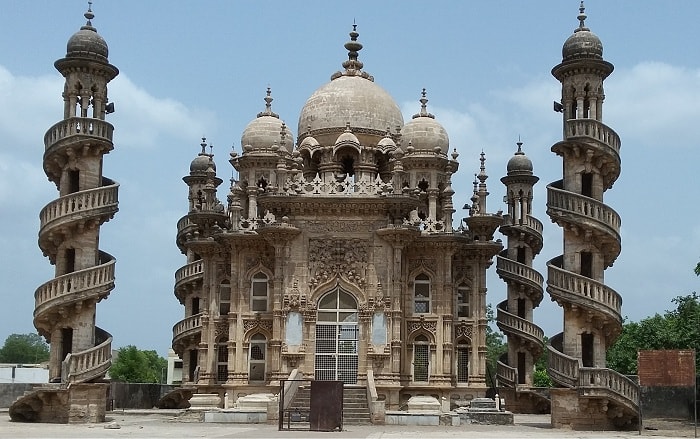
The Mohabbat Maqbara is also known as the tomb of Bahaduddinbhai Hasainbhai. What makes it so different from other mausoleums is its unique architecture that incorporates elements of Indo-Islamic and Gothic styles with quite elaborate stone carvings and the circular winding staircases on all four minarets. It is beautiful and poetic in concept and execution.
2. Uparkot Fort

The Uparkot Fort dates back to the time of the Mauryan Empire and thereafter it was occupied by the Chudasama dynasty. It nestles in the foothills of the Girnar hills and it has three gateways enclosed one within the other. The walls are about 70 feet high with the inner gateway resplendently carved in stone. A huge cannon graces the courtyard and another one is in the southern part of the fort. Within the precinct one can find the Jama Masjid said to have been built by Mahmud Begda. This was supposedly the palace of Ranakadevi before Mahmud Begada conquered the fort. The tomb of Nuri Shah sits close to the mosque and has some beautiful carvings. The fort also houses two stepwells, the Adi Chadi dating back to the Chudasama dynasty and the Navghan Kuvo. One can also find Buddhist caves in the vicinity as well as the Baba Pyara caves that back to the 2nd century. However, it is the Buddhist caves that impress with their rock cut architecture and chaitya halls. It is believed the Buddhist monks lived here before going on to Ellora and Ajanta. There is a manmade lake, the Nawabi lake right inside the fort. The fort is large and it takes about 2 to 3 hours to explore it in its entirety.
3. Damodar Kund
Not far from the Fort one can come across Damodar Kund that is rectangular in shape with a temple dedicated to Lord Damodar ji on one side. It is a pilgrimage spot favored by devotees who feel obligated to bathe in the tank as part of their duty.
4. Ashok Shilalekh of Ashoka Edicts

That Emperor Asoka had a presence here is testified by the stone edicts left behind by him in 263 BC. The inscription in stone preach the 16 principles and the story of Ashoka. For those who love history, this is a must visit place in Junagadh.
5. Dattatreya Temple
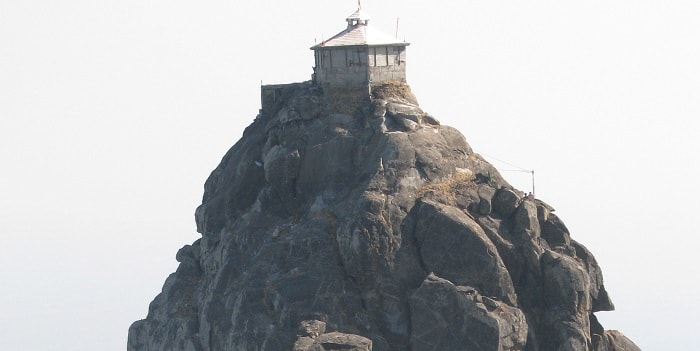
There is a Dattatreya temple right on top of Mount Abu and there is one here on top of Girnar Hill too. One has to climb an astounding 9999 steps to reach the temple and from the top one has a clear view of Junagadh and the surrounding countryside. It takes hours to climb and pilgrims usually start at 4 AM. From here one can go on to the Ambaji temple on Ambaji Shikhar, which is not far off.
6. Girnar Jain Temple
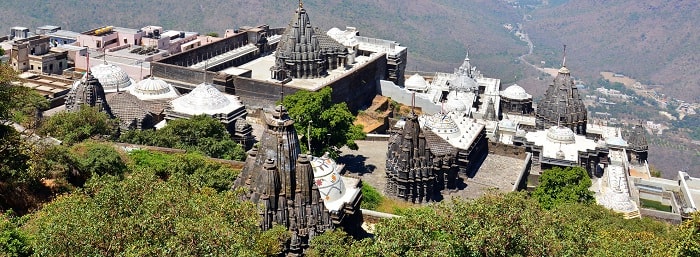
Like the Dattatreya temple, the Girnar Jain temple is located in the Girnar Hills and it has a collection of beautiful temples dedicated to various tirthankaras who chose to meditate in the solitude of the hills. There are temples of the Digambara and Shwetambar sect. It is said that Neminath, the 22nd Tirthankara renounced his royal life and became a Jain monk here. His wife, Rajul, also joined him to lead life as an ascetic. Some believe that the Jains here predate Asoka. The Jain temple here rivals the Dilwara temples in the beauty of carvings. Walking through the complex takes you to the old granite temple built by Bhoja Raja of Kutch and a large temple created by Vastupal. There are 16 temples here with the largest one dedicated to Neminath. A short walk brings you to the huge statue of Rishabh dev, the first Tirthankar, modeled along the lines of the statue at Palitana. Then there is a temple dedicated to lord Parshwanath that one must visit. Lord Parshwanath is shown as being shaded by a cobra. Kumarpal Temple is also worth a visit. The temple complex also has a large water tank known s Bhim Kunda. If one climbs higher up one can visit the Digambar Jain temples and the Rajulmati Cave. The temple has the idol of Bahubali and the idol of Lord Neminath and Parshwanath.
7. Darbar Hall Museum
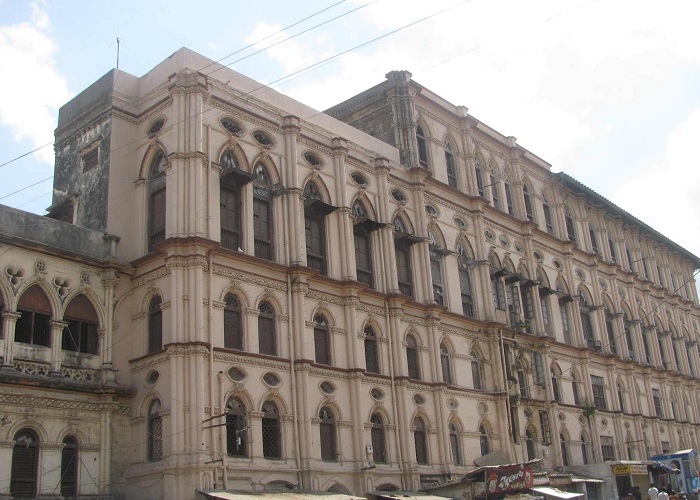
Land in the city and the first place to visit in Junagadh is the Darbar Hall Museum located right in the heart. The Darbar Hall showcases the lifestyle of the Nawabs who ruled here at one time and it is rich repository of their garments, furniture, coins and paintings as well as guns.
8. Datar Hills

Datar Hills, not far from Junagadh, is perfect for trekking with its tree covered slopes. It is the ideal location to get some exercise and commune with nature.
9. Sakkarbaug Zoological Garden

The Sakkarbaug zoo dates back to 1863 and it is spread over 490 acres. Famously known for breeding Asiatic lions, the zoo was established by the Babi Nawabs of Junagadh and it is home to over 525 animals, 600 birds and 100 reptiles. There is also a Museum in the premises that showcase wildlife specimens.
10. Wellington Dam

One of the chief attractions at Datar is the Wellington Dam. It was built by the British to serve as a source of water for the city of Junagadh and the places truly takes on a scenic charm during monsoon as tiny waterfalls cascade down the hills. One can enjoy a lovely picnic by the dam and enjoy watching birds.
11. Moti Baug
Located within the campus of the Agriculture University, the Moti Baug gardens are beautiful and captivating with a large water tank and lush greenery. It is peaceful and quiet inside the gardens.
12. Gir Forest National Park
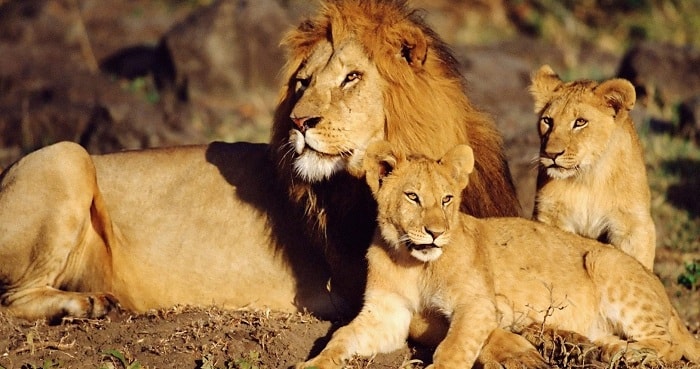
The Gir and the Asiatic lions are what draw people to Junagadh. The Gir Forest National Park is about 65 km south-east of Junagadh. The forest was once the hunting grounds of the Nawab of Junagadh. The reserve spreads over an area of 1412 sq. km, of which 1153 sq. km. form the sanctuary and 258 sq. km area is fully protected. The lion is the star attraction here but there are over 2300 various species of fauna, 300 species of birds and 37 species of reptiles to be found within the reserve. The forest is home to over species of plants comprised of acacia, tendu, and dhak, flame of the forest and karanj trees. There are seven rivers flowing through the Gir forest. Some rivers have dams on them and these serve as watering holes for the animals in the forest. Most tourists find it convenient to visit the interpretation zone of Devalia within the sanctuary from where one can view the wildlife.
13. Science Museum
This is the only privately owned science museum in Gujarat and provides plenty of attractions for children as there are over 60 science projects they can participate in and learn by doing. The museum has a garden and a small aquarium within the premises.
Junagadh is the land of Nawabs and the Darbars too held sway here. Places to visit in Junagadh will give you a glimpse into the past but there are other attractions as well. Food in Junagadh is typically kathiawadi. It is common for people to enjoy a hearty breakfast of farsan which is a generic term that covers fafda, ganthiya and khaman, all made with chick pea flour. For lunch or dinner, bajra rotla and brinjal curry is a popular dish that you must try along with the famous kadhi.
